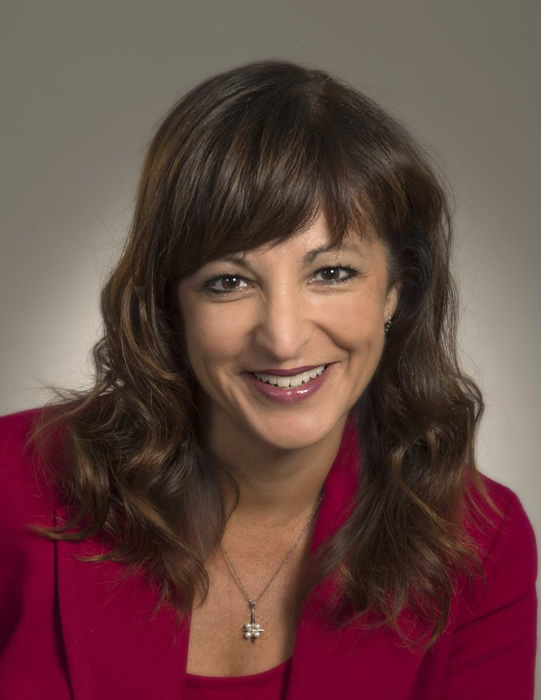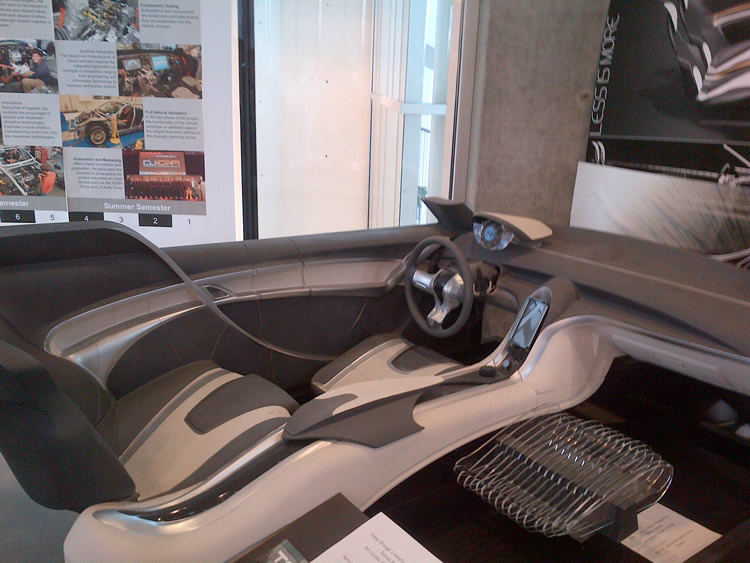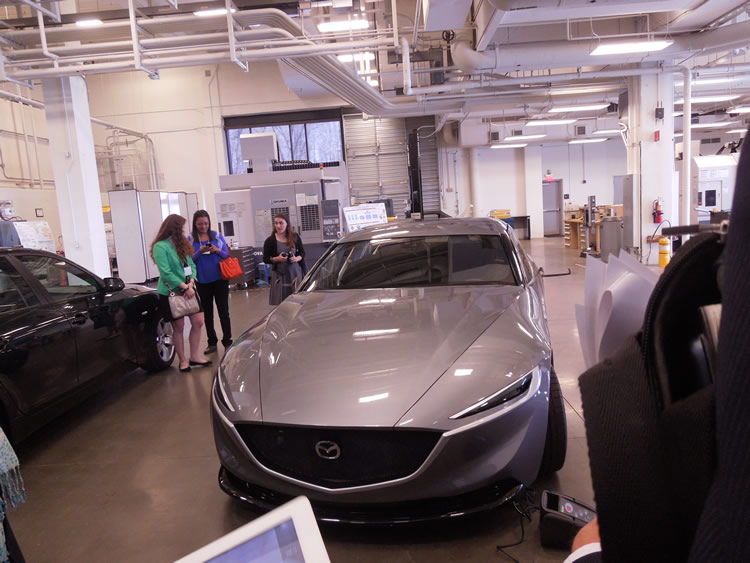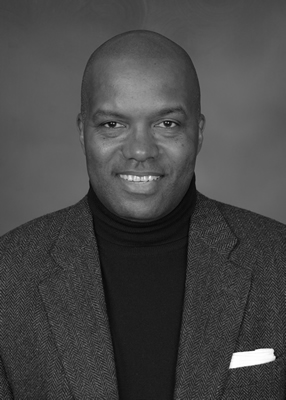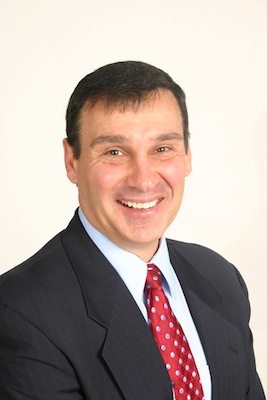
July 2014
In This Issue
Q&A: Julie Lenzer, Director, Office of Innovation and Entrepreneurship, EDA
Julie Lenzer was recently appointed by U.S. Secretary of Commerce Penny Pritzker to lead the Office of Innovation and Entrepreneurship (OIE), an office within the Commerce Department’s Economic Development Administration (EDA). In her capacity as Director of the OIE, she is charged with driving programs and policies that support innovative economic development such as innovation-based entrepreneurship and regional innovation clusters. Her passion is infusing innovation and entrepreneurial mindset coupled with action into individuals, communities, and regions to act as a catalyst for economic growth. Formerly, she was the Executive Director of the Maryland Center for Entrepreneurship (MCE) which is an initiative of the Howard County Economic Development Authority. Based in Columbia, Maryland the MCE is focused on igniting the entrepreneurial culture and bringing together the entrepreneurial ecosystem across the state. During her tenure, the MCE quadrupled its client base and saw the creation of new programs such as 3D Maryland, a leadership initiative connecting resources in additive manufacturing; the Conscious Venture Lab, an accelerator focused on Conscious Capitalism; and a technology transfer accelerator in partnership with Johns Hopkins Advanced Physics Lab and other leading research institutions. She was the Co-Chair of Startup Maryland which launched a highly successful bus tour across the state, “Pitch Across Maryland,” connecting entrepreneurs with each other and the resources they need to start and grow. She is also the co-founder and former CEO of the Path Forward Center for Innovation and Entrepreneurship, a nonprofit that helps women expand economic opportunity by starting and building growth-oriented businesses. The Center, home of the award-winning ACTiVATE program, focuses on businesses that have the potential to leverage technology as they grow beyond the founder to create jobs, increase opportunities, and improve the world. Q1: What is the Office of Innovation and Entrepreneurship? Office of Innovation and Entrepreneurship was created by former Secretary of Commerce Gary Locke and made official by Congress through the America Competes Act of 2010 to:
Q2: What attracted you to EDA and to this position? I am a recovering entrepreneur who has found a passion in building and connecting entrepreneurial ecosystems. I have a very eclectic past, with includes starting, growing, and cashing out of a technology company; teaching entrepreneurship and technology transfer; and actually licensing technology to start a nonprofit. The past 2 ½ years I was Executive Director for the Maryland Center for Entrepreneurship, which was a part of the Howard County Economic Development Authority and also the Co-Chair of Startup Maryland. In both of those roles, I worked to bring together the resources needed to help companies start and grow. I also experienced first-hand the opportunity available when communities leverage innovation and entrepreneurship as an engine of economic growth. All of these diverse experiences feed into my current role, which provides an ideal opportunity to provide an impact at a national level. Q3: What do you see as the greatest challenge and as the greatest opportunity facing your office? The greatest challenge is working within the government at the speed of entrepreneurship when there are so many things I would like to do. That is also the greatest opportunity. Thankfully, I have found an incredibly hard working and dedicated set of folks within EDA who are equally passionate about empowering communities. Q4: What do you hope to accomplish over the next two and a half years? In addition to supporting NACIE and launching another i6 Challenge (or two), I have three primary goals for my time in OIE:
Success Story: CU-ICAR Driving Successful Innovation in South Carolina and Beyond
Greenville, like much of the region, used to be a textile town. The decline of the textile sector hit Greenville hard. What could have spelled disaster for this charming southern town was instead treated as an opportunity. The local leaders brought together the university and other public and private partners to create what has since become a thriving automotive cluster. BMW located a plant in nearby Spartanburg, and Clemson seized an opportunity to get involved in growing the region’s automotive sector. Founded in 2007, CU-ICAR is an advanced-technology research campus where university, industry, and government organizations engage collaboratively. With more than $200 million in commitments, it represents a prime example of the promise in public-private partnerships, directly fueling a knowledge base critical to the automotive industry. In 2009, CU-ICAR received $3 million from EDA for the construction of the Center for Emerging Technologies, a 60,000-square-foot facility with lab, office, and administrative space. “One of the biggest reasons for the success of CU-ICAR has been the focus on economic development,” says Fred Cartwright, Executive Director of CU-ICAR. “Economic development is what binds our efforts together -- from listening to what our industry partners’ needs, to conducting state-of-the-art research, to the unique education offered to our automotive engineering students, to the incubation environment afforded to start-ups -- we are dedicated to developing the automotive sector in this part of the U.S., to the benefit of the greater economy.” In the decade since its creation, CU-ICAR has revolutionized automotive research and put countless members of the Greenville community back to work. One of the programs at CU-ICAR is Deep Orange, a dream for any girl or boy who grows up loving cars. The students in the Deep Orange program get funding from major car manufacturers to build prototype cars of the future. The engineers at Deep Orange work with the Art Center College of Design in Pasadena, California to come up with ideas for the next big thing automotive design and function. While some of their designs may never make it to market, the outside the box thinking encouraged by the program paves the way for future innovations in the industry. Recently, the Deep Orange 3 concept car for Mazda was revealed. Participants on the Americas Competitiveness Exchange trip in April were treated to a peek at the concept car with such forward-thinking design elements as hologram projectors for mirrors
CU-ICAR continues to expand, and recently received another grant from EDA to build space for private-public partnerships focused on developing new technologies in the automotive, mobility and IT fields, supporting the intersection of productivity, innovation, and entrepreneurship. Greenville has diversified itself into a booming industrial cluster and CU-ICAR has put the town in the driver’s seat for innovation. Guest Column: Can A New Form Of Capitalism Save the World? The Premise and Promise of Conscious Capitalism* Any views or opinions presented in this guest column are solely those of the authors and do not necessarily represent those of the EDA or the Department of Commerce. By: Jeff Cherry and Rick Frazier
Over our careers as entrepreneurs, CEOs, consultants, business advisors and now as investors, two things have become pretty apparent to us: first, capitalism offers society the best hope of making life better for people all over the planet. This basic premise cannot be ignored in the face of overwhelming historical evidence. And second, although many don’t like to admit it, capitalism is in a state of crisis. Look around, and you will find far too many examples of companies that seem to have lost their way. Capitalism as currently practiced still contains many hard edges that prevent it from being as powerful a force for good as it could be. Much of the nation doesn’t trust Corporate America. In light of persistent examples of poor customer service, full time employees taxing our social services because they can’t provide for their families, the financial crisis, the recent recession, and persistently low levels of commitment and engagement in the American workplace, many of us see businesses’ focus on short-term profits at any cost as a major contributor to this state of affairs. And yet there is good news afoot. A growing number of companies realize that simultaneously paying attention to the needs of all stakeholders is not only key to a sustainable society, but also the surest and safest path to long-term financial success. These companies recognize the marketplace is demanding they do more than simply strive to maximize their own profits by extracting resources from nature and people to do so. They recognize that in an environment of increasing transparency fostered by social media, and a growing societal desire to find meaning in all we do, we are collectively rethinking our relationship with capitalism. We are considering new metrics as we choose whom we want to work for, buy from, and allow to operate in our communities. In response, the best-managed companies are creating work environments that inspire people to give their best efforts and that cause them to take pride in their work and company. They don’t expect communities to simply be grateful for the jobs they bring in, regardless of what kind of neighbor they turn out to be. They don’t sacrifice the long-term health of their organization on the altar of short-term earnings. In short, they are setting the example for how companies can smooth the hard edges of capitalism and strive to have it be more universally viewed as a positive force for good. Conscious Capitalism® is a term that has been used to describe companies that operate with this more holistic, inclusionary mindset. Remarkably, this mindset does not compromise shareholders’ interests. In fact, shareholders often experience greater gains than shareholders in competing companies. To demonstrate this we need look no further than the ground-breaking work done by our colleagues, Raj Sisodia and the late David B. Wolfe. In their book Firms of Endearment: How World Class Companies Profit from Passion and Purpose, Raj, David and co-author Professor Jag Sheth found that publicly traded Firms of Endearment– companies that celebrate and promote purpose, meaning, appreciation, joy, and even love – returned 750% over 10 years, while the S&P overall provided a 128% return. In 5 years, these same companies provided their investors 205% return, while the S&P lost 13% 1. We have a tremendous opportunity in front of us to create a form of capitalism that lifts all boats – not just the yachts. Government can aid in this transformation through stronger, more collaborative bonds with those companies that are creating exceptional value for investors by proactively serving society. After all, partners are always more responsive to one another’s needs than adversaries. Capitalism can evolve into a system for creating a more just, joyous, profitable and sustainable society. A society that rewards work as a calling, affords families the opportunity to live out their dreams, respects the planet and creates ever greater opportunities for workers, investors, communities and customers. That, we believe is the promise of Conscious Capitalism. Jeff Cherry is the CEO and Managing Partner of the Porter Group, LLC, an investment consulting and venture capital firm. He is also the Founder and the Executive Director of the Conscious Venture LabSM, an accelerator for early stage companies focused on purpose and profit. Rick Frazier is Founding Partner and Head of Research at Concinnity Advisors, LP, an investment advisory firm founded on the premise that companies guided by a multi-stakeholder operating system are best positioned to meet the expectations of newly ascendant stakeholders and to flourish in a new marketplace reality. 1 Raj Sisodia, David B. Wolfe, Jag Sheth, “Firms of Endearment: How World Class Companies Profit from Passion and Purpose” Wharton School Publishing, 2007 Highlight: Secretary Pritzker Seeks Innovation AdvisorsEDA has issued a call for applications for membership on the National Advisory Council on Innovation and Entrepreneurship (NACIE) – a federal advisory committee that will advise the Secretary of Commerce on issues related to accelerating innovation and expanding entrepreneurship, with an added focus on job-driven skills training that creates jobs and spurs innovation. The Commerce Department is now accepting applications for new Council members through July 14, 2014. NACIE was originally established as part of the America COMPETES Act in 2010. The Council will operate as an independent entity within the Office of Innovation and Entrepreneurship (OIE), which is housed within the Commerce Department’s Economic Development Administration. The Secretary of Commerce will appoint up to 30 NACIE members for a two-year term. NACIE members will identify and recommend solutions to issues critical to driving the innovation economy, including enabling entrepreneurs and firms to successfully access and develop a skilled, globally competitive workforce. The Council will also serve as a vehicle for ongoing dialogue with the entrepreneurship and workforce development communities, including working with business and industry associations. Council members will be selected in a way that ensures balanced perspectives and varied expertise in terms of innovation, entrepreneurship and skills training, including members who represent wide-ranging geographic locations and experience from industry, government, academia and non-governmental organizations. Applications must be received by July 14, 2014, to be considered for membership. Applications can be submitted electronically to [email protected] or by mail to the Office of Innovation and Entrepreneurship, Attn: Julie Lenzer, 1401 Constitution Avenue NW, 7th Floor, Washington, DC 20230. |
|
|
|||
Know A Company Looking for Manufacturing Space? EDA’s Got a Tool for ThatThe decline in the manufacturing sector of the United States has left hundreds of millions of square feet of nonproductive commercial, industrial, and manufacturing space. This excess capacity provides an opportunity for foreign companies looking to expand into U.S. markets, and for domestic firms planning to relocate, expand, or diversify. The National Excess Manufacturing Capacity Catalog (NEXCAP) promotes business expansion and innovation, regional economic development, and job growth by matching companies looking to relocate, expand, or diversify with the use of vacant manufacturing sites/facilities. NEXCAP provides a comprehensive inventory of closed plants and sites in each region; detailed profiles of the selected facilities, sites, and communities; and a Searchable Catalog that provides access to the facility, site, and community inventories and profiles. It includes input process and tools that serve to match the supply of the facilities with the demand by companies. For more information, download a printable brochure (PDF) explaining the features and mission of NEXCAP, the NEXCAP fact sheet (PDF) or view a map of sites profiled by NEXCAP. (PNG) OEDC Measures Regional Well-BeingThe Organisation for Economic Co-operation and Development (OECD), a global group that promotes policies to improve the economic and social well-being of people around the world, launched the website www.oecdregionalwellbeing.org/ on 24 June. This website allows users to compare 362 OECD regions in terms of their well-being, measured with objective indicators from the OECD Regional Database on eight topics: income, jobs, education, health, safety, environment, civic engagement and access to services. Check out the new website to learn more about the well-being of your region! DOL Invests in Workforce DevelopmentThe U.S. Department of Labor awarded grants totaling $154,757,547 to 32 states, Puerto Rico and the Cherokee tribal nation through the Job-Driven National Emergency Grant program. The funding will be used to train workers who lost a job through no fault of their own for jobs in high-demand industries. Click here to read more about the grantees and the program. FFO Coming SoonIn the coming weeks, EDA will be issuing a new Regional Innovation Strategies FFO. We will be soliciting applications for three separate competitions:
Keep an eye out for more information from EDA about the innovative funding opportunity. |

